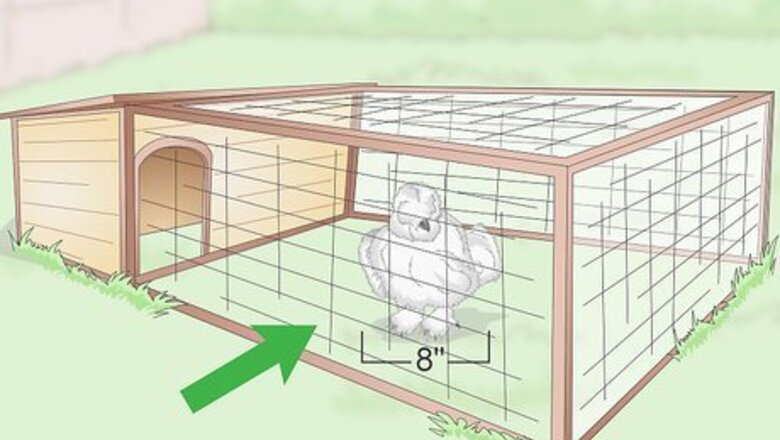
views
Housing the Chickens
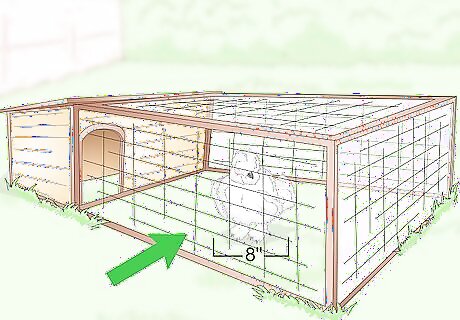
Set up a coop with 3-4 feet each inside the coop and 8-10 feet each in the run. Silkies are small birds so they don’t need as much space as larger chickens. That said, if you have the option to give them more space in the coop, do so. They will appreciate the extra room. You can order a pre-made coop online or build your own. A good coop will have a mesh ventilation window in one of the walls, which you can close during rainy weather. There should be a door to let chickens out into the yard or run. Have an area for the chickens to roost. Ther roost should be 8-16 inches high and you should have 6 inches per chicken. That means if you have 2 Silkies, the roost should be 12 inches long.
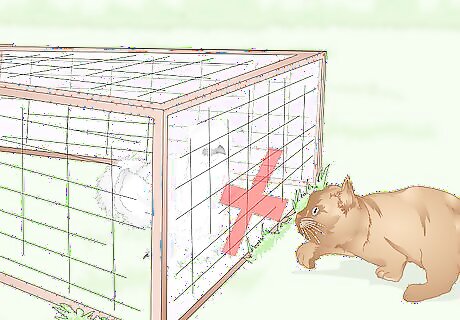
Choose a coop that predators can’t break into. Hawks, owls, dogs, cats, raccoons, and coyotes may all target silkies. To keep your chickens safe, make sure that their coop is predator-proof. Use wire with holes that are no larger than .5 inches (13 mm) wide so that other animals can't climb in. Either choose a coop with a solid floor or bury wire mesh into the ground under the coop. This prevents burrowing animals, like rats, from digging their way in. All windows and top openings should be covered with mesh. Check for holes and gaps regularly.

Set up a chicken run outside of the coop to protect the chickens. A chicken run is a small, enclosed area outside of the coop where your silkies can safely roam during the day. Make sure the area is covered from the top so hawks cannot swoop at them. Since silkies don’t do well in wet weather, make sure that at least part of the run is covered on top. Chicken runs keep chickens safe from predators. They also prevent your chickens from escaping or becoming lost.
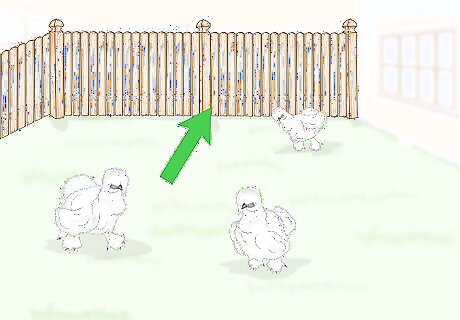
Fence in an outdoor area if you want free-range chickens. If you want to skip the chicken run and give your silkies more room to explore, you can always keep them in a fenced yard. Give them as much space as you can. Free-range chickens often have a healthier diet, as they will supplement their feed with grasses and bugs. Make sure that part of the yard is shaded or covered so that the silkies have protection from rain and heavy sun. You can set up an overhang or plant trees for shade. Overhead covering is still important for free-range chickens since predators could attack them during the day. Even if your chickens are free-range, they must be kept in a coop at night to protect them from weather and predators.
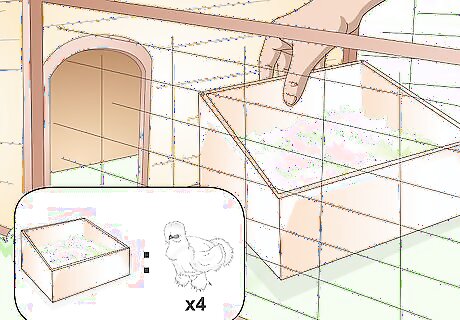
Install 1 nest box for every 4 hens. Nest boxes give your chickens somewhere to lay their eggs. The nest boxes should be 12 inches in all dimensions. Use wood shavings in the nest boxes. Place the nest boxes in a dark, quiet corner of the coop. Keep them close to the ground, since silkies can't fly or jump very high, or provide a ramp up the higher ones.
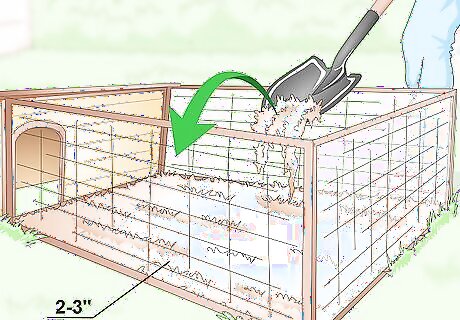
Add a 2–3 inches (5.1–7.6 cm) layer of bedding to the bottom of the coop. Wood shavings, hay, or straw all make great bedding. Cover the entire floor of the coop. Bedding helps insulate the coop and keep your silkies warm. It will also absorb their droppings to make clean-up easier.
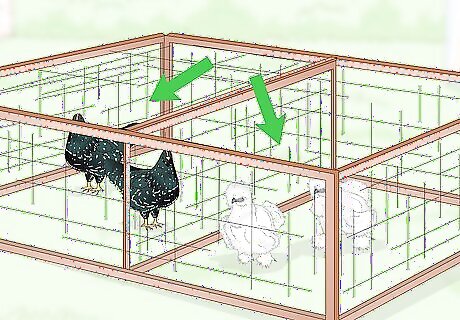
Keep silkies and chickens with similar temperaments together. Silkies tend to be docile chickens, which means that other breeds can sometimes bully them. If you’re going to keep silkies with other chickens, go for Polish chickens or bantams. Since silkies are docile, it may be possible to keep more than 1 male bird with the flock. If the males start to fight, however, separate them.
Feeding Silkies
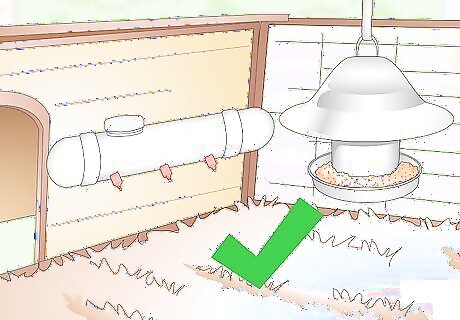
Add a feeder and waterers to the coop. Use covered feeders and waterers to prevent feces from dropping into the food. These may look like a container that pours out into a dish. Water drinkers may even come with nipples for chickens to drink from. Hang the food and water dishes as high as the Silkies breasts. The chickens should be able to easily reach the food and water, but they shouldn’t be able to climb on top of it. If you have a brooding hen or a hen with chicks, place a separate feeder and drinker close to it. Use a “no-drown” drinker so that the chicks can drink without falling in.
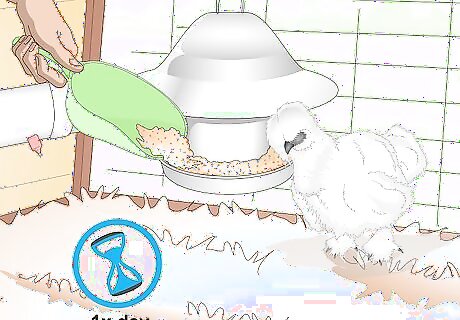
Feed the chickens once a day. Chicken feed includes a mix of grains, seeds, corn, and mineral supplements. Aim to give at least 1/8 to 1/4 a pound of feed for every bird. Look for prepared chicken feeds at feed mills, pet stores, and online. The best feed type for Silkies in best to least is pellets, crumbles, and mash. If the chickens are less than 20 weeks old, use a starter or developer blend of chicken feed. If the chickens are older than 20 weeks, give them a layer blend of feed. These usually contain oyster shells to supplement their calcium intake. A finisher blend is for meat chickens. Give it to them 6 weeks before slaughter.
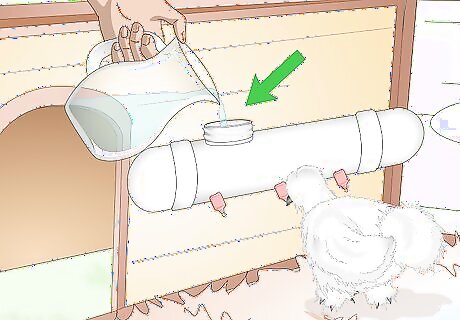
Provide fresh water every day. Refill the hen’s water drinker up to the top with fresh water. If the drinker runs out of water during the day, fill it back up again. Don't leave a drinker empty during the day, especially in hot weather. In the winter time, check the water multiple times a day to make sure it isn't frozen.

Give your silkies a bowl of grit to help them break down food. Since silkies, like other chickens, don’t have teeth, they need small rocks called grit to help break their food down. Put a small bowl of grit in their coop near the food. You can buy grit from pet stores, feed mills, or online. The chickens will self-moderate how much grit they have in their diet. Refill the bowl of grit whenever it starts to get low.
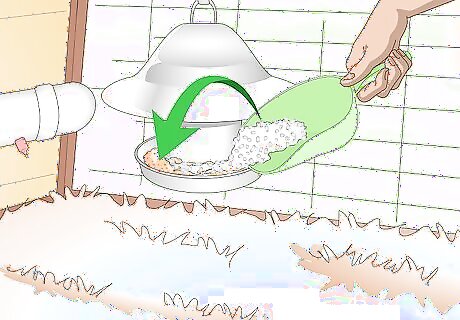
Provide oyster shells for healthy eggs. If your silkies eat layer pellets, they may get enough calcium already. If they don’t, try adding crushed oyster shells to their feed. This will help them lay strong eggs. You can buy crushed oyster shells at pet stores or feed mills. You can give your chickens fresh greens year-round.
Keeping the Silkies Clean

Trim the feathers around the face and rear. A gentle trim can help your silkie see through their long hair and keep them clean around their backend. Hold the chicken still with one arm. With a small pair of nail scissors, gently clip the ends of their longer feathers. Don’t cut too close to their skin or you may hurt them. Silkies can’t fly, so you don’t need to clip their flight feathers.
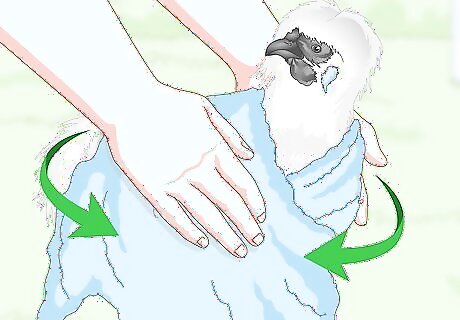
Dry off silkies if they get wet or damp. Silkies’ famous feathers aren’t very waterproof. If your silkies get wet, dry them off with a towel before placing them inside a warm room or coop.
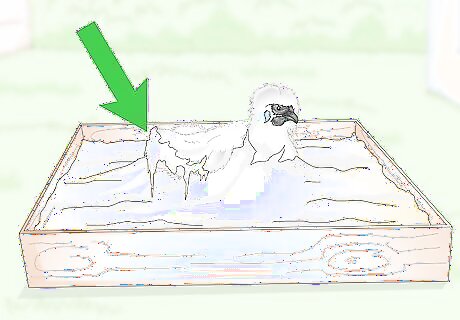
Set off an area for dust baths. Silkies keep themselves clean naturally with dust baths. Make sure that a corner of their run or yard is bare dirt. If this is not possible, place a bowl in the coop with 6 inches (15 cm) of dusting powder. You can buy a dusting powder at a pet store, livestock store, or online.
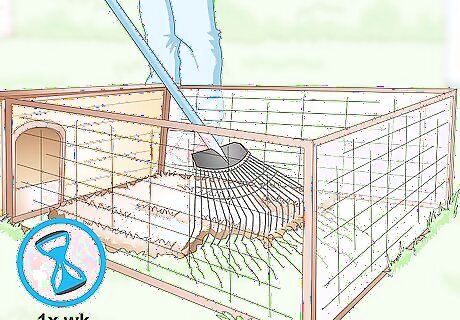
Clean the coop once a week. A clean coop will help keep your silkies healthy and happy. Once a week, remove the dirty bedding from the coop. Wipe down the nest boxes and floor with bird-safe disinfectant. Replace the bedding with fresh shavings or litter. If any droppings are stuck to the nest boxes, scrub them off. Do not use normal disinfectants, as these can irritate your chicken’s respiratory systems. You can buy bird-safe disinfectant at a pet store.
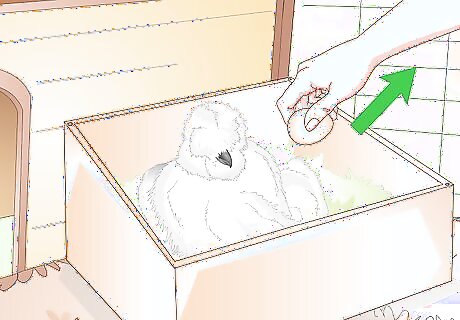
Collect the eggs in the morning. Silkies don’t lay as many eggs as other chickens. At best, you might get 2-3 eggs a week. Collect the eggs once every morning. Throw away any cracked or split eggs. Clean off and keep the rest. You can cook and eat silkie eggs as you would any chicken eggs. If your hen won't let you get the eggs, she is broody. If you want baby Silkies leave her alone. If not take her off the eggs.
Monitoring for Common Medical Issues
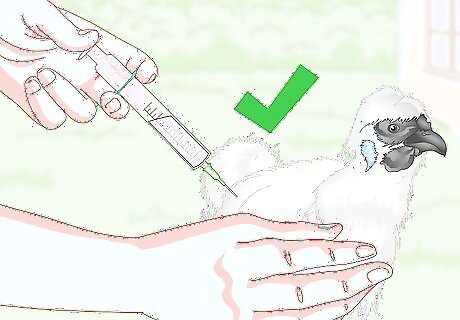
Vaccinate chicks to prevent Marek’s disease. Marek’s Disease is caused by the herpes virus. It is very common in silkies. Ask a vet to vaccinate your chicks while they are still young to prevent an outbreak in your flock. Many breeders try to breed diseases out of their chickens. Take this into consideration as you choose where you get your chickens. Symptoms of this disease include a gray or misshapen eye, lesions on the skin, and weight loss. Unfortunately, there is no cure for this disease. If your birds have been diagnosed with it, you will need to euthanize them.
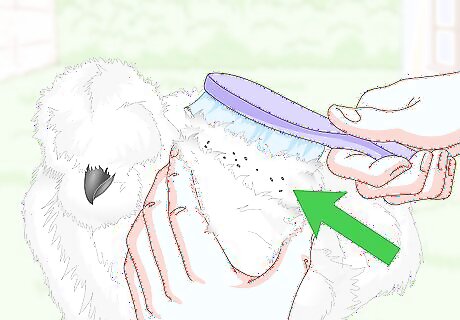
Check the chickens regularly for parasites and lice. Once a week, brush through the silkies’ feathers. Look for any small, black or red moving dots in their skin or feathers. If you notice any mites, take your silkie to the vet. Other signs of mites include restlessness, excessive biting of the feathers, ruffled or patchy feathers, and skin lesions. Make sure to clean the coop thoroughly if you find mites in 1 of the birds. Use a bird-safe disinfectant.
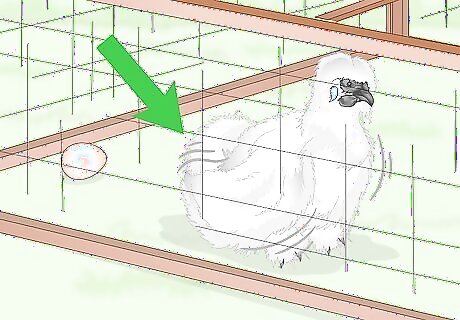
Watch for broody behavior to see if the hen is laying fertilized eggs. Brooding is when the hen lays fertilized eggs to hatch. The hen will want to move to a different part of the coop. It may resist being touched, or picked up as it sits on its eggs protectively. It may puff up or squawk as you approach it. If your Silkie is broody, move her and the eggs to a seperate coop. Once the chicks hatch, keeps them and their mom away from other chickens untill the are 2 months old. While you can place the eggs in an incubator, silkies are known to be excellent brooders. This means that they generally won't abandon their eggs or chicks. If you have other breeds of chickens that won’t brood, try giving their eggs to a silkie. Silkies are known to brood any eggs, even egg-shaped items like rocks or tennis balls!


















Comments
0 comment